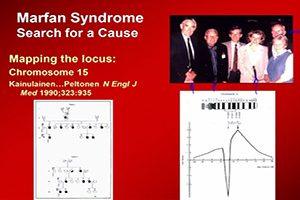Etiology and pathogenesis of the Marfan syndrome: current understanding
Abstract
Much has changed regarding Marfan syndrome (MFS) over the past few decades. Once described solely as a heritable disorder of connective tissue, MFS is now one of a number of conditions recognized to be a disorder of abnormal signalling in the TGF-β pathway. The cardinal features of MFS, once encompassed by the ocular, skeletal and cardiovascular systems, are now known to encompass many more organ systems, especially as people with MFS grow older. They are growing older by several decades compared to the 1970’s because of profound improvements in diagnosis and management of the cardiovascular features, especially dilatation of the aortic root. This dilatation can be detected first in infancy and followed up by echocardiography. Progressive enlargement increases the risk of type A dissection and aortic regurgitation, the major causes of early mortality, in untreated patients today. Medical therapy with β-adrenergic blockade, first shown to be effective in the 1980’s, can retard this dilatation. In the past decade, angiotensin receptor blockade, which reduces aberrant signalling through one of the TGF-β pathways, also can be effective. However, when dilatation of the root becomes such that the risk of dissection increases to an unacceptable degree, surgical therapy becomes necessary. In the mid-1970’s, the composite graft, introduced by Hugh Bentall, markedly reduced mortality. In the past decade, a valve-spring aortic root replacement, advanced by Tirone David, has become widely adopted. Mid-term results are quite encouraging. Other cardiovascular involvement, such as mitral valve prolapse, type B dissection, and dilatation and dissection of aortic branches, also require close monitoring. Currently, life-expectancy in people with MFS who are diagnosed early and treated prophylactically is approaching that of the general population.
Cover






